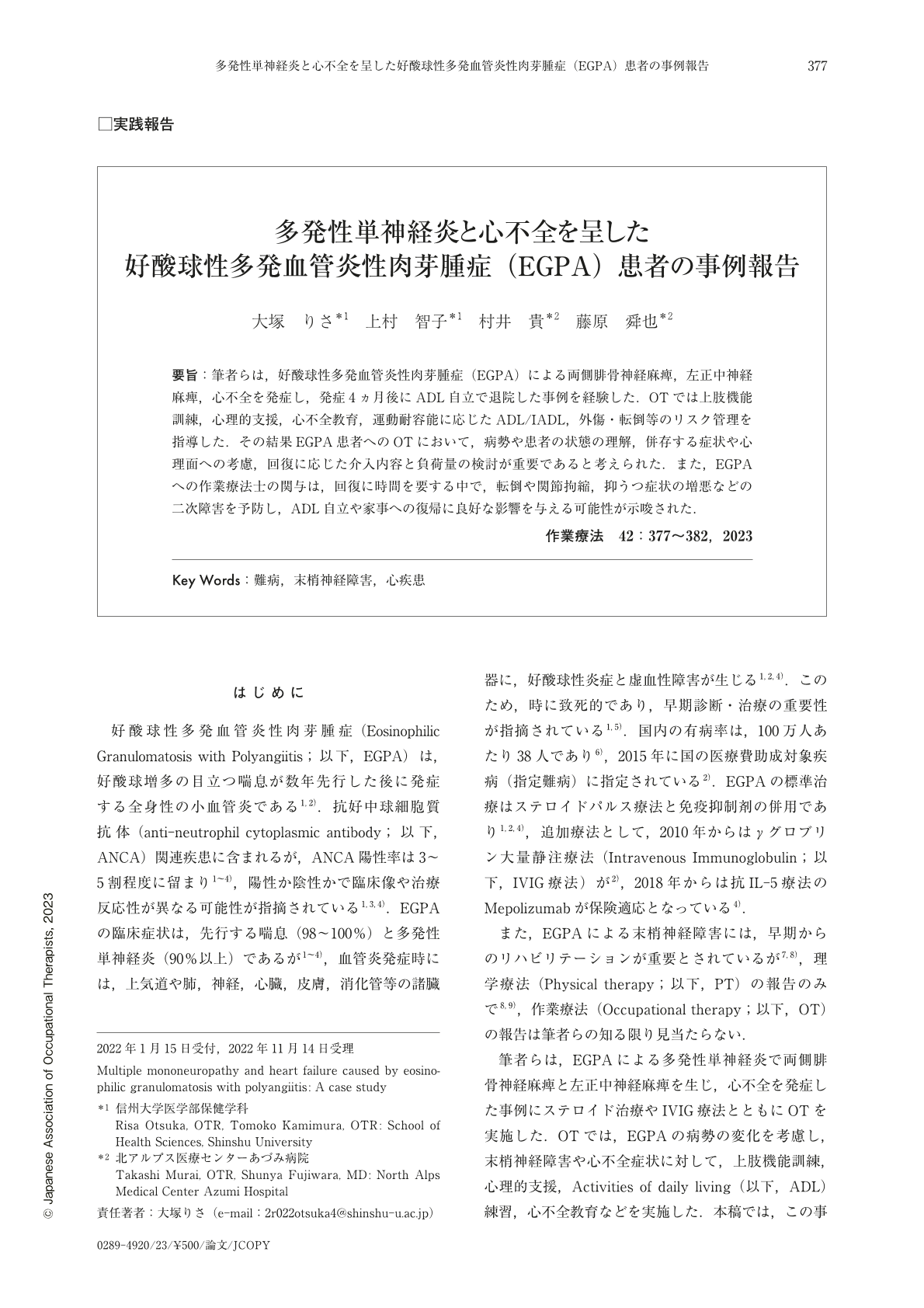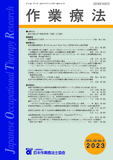Japanese
English
- 販売していません
- Abstract 文献概要
- 1ページ目 Look Inside
- 参考文献 Reference
要旨:筆者らは,好酸球性多発血管炎性肉芽腫症(EGPA)による両側腓骨神経麻痺,左正中神経麻痺,心不全を発症し,発症4ヵ月後にADL自立で退院した事例を経験した.OTでは上肢機能訓練,心理的支援,心不全教育,運動耐容能に応じたADL/IADL,外傷・転倒等のリスク管理を指導した.その結果EGPA患者へのOTにおいて,病勢や患者の状態の理解,併存する症状や心理面への考慮,回復に応じた介入内容と負荷量の検討が重要であると考えられた.また,EGPAへの作業療法士の関与は,回復に時間を要する中で,転倒や関節拘縮,抑うつ症状の増悪などの二次障害を予防し,ADL自立や家事への復帰に良好な影響を与える可能性が示唆された.
The authors experienced a case in which a woman in her 40s with multiple mononeuropathy (bilateral peroneal nerve palsy and left median nerve palsy) and heart failure due to EGPA was discharged 4 months after OT for ADL independence along with steroid therapy and intravenous gamma globulin. The OT included upper extremity functional training, psychological support during the acute phase, heart failure education, ADL practice according to exercise tolerance, and risk management such as falls and hand trauma. In OT for patients with EGPA, it is important to understand the pathophysiology of EGPA and the patient's condition, consider comorbid symptoms and psychological aspects, and think about intervention content and load according to recovery. Furthermore, these interventions may prevent disabilities secondary to EGPA such as falls, joint contractures, and depressive symptoms, and have a positive impact on ADL independence.

Copyright © 2023, Japanese Association of Occupational Therapists. All rights reserved.


